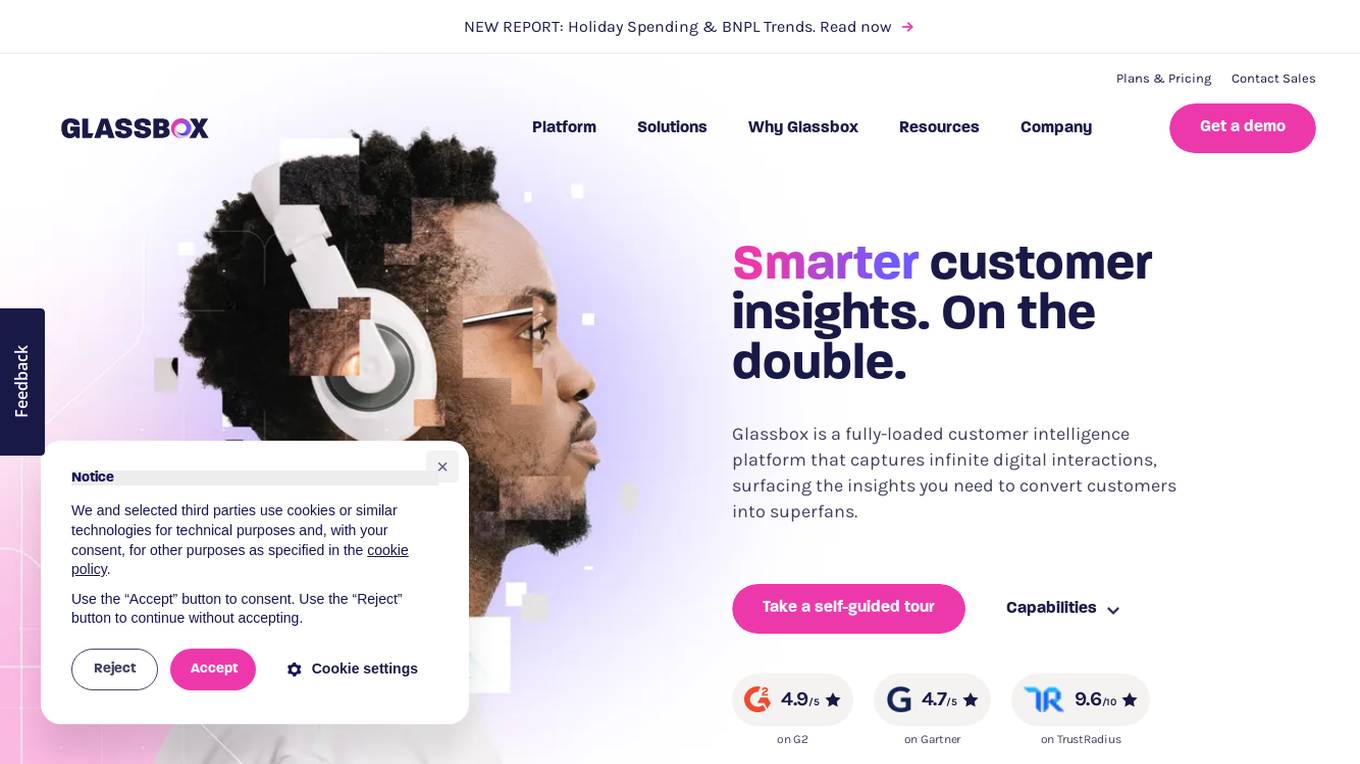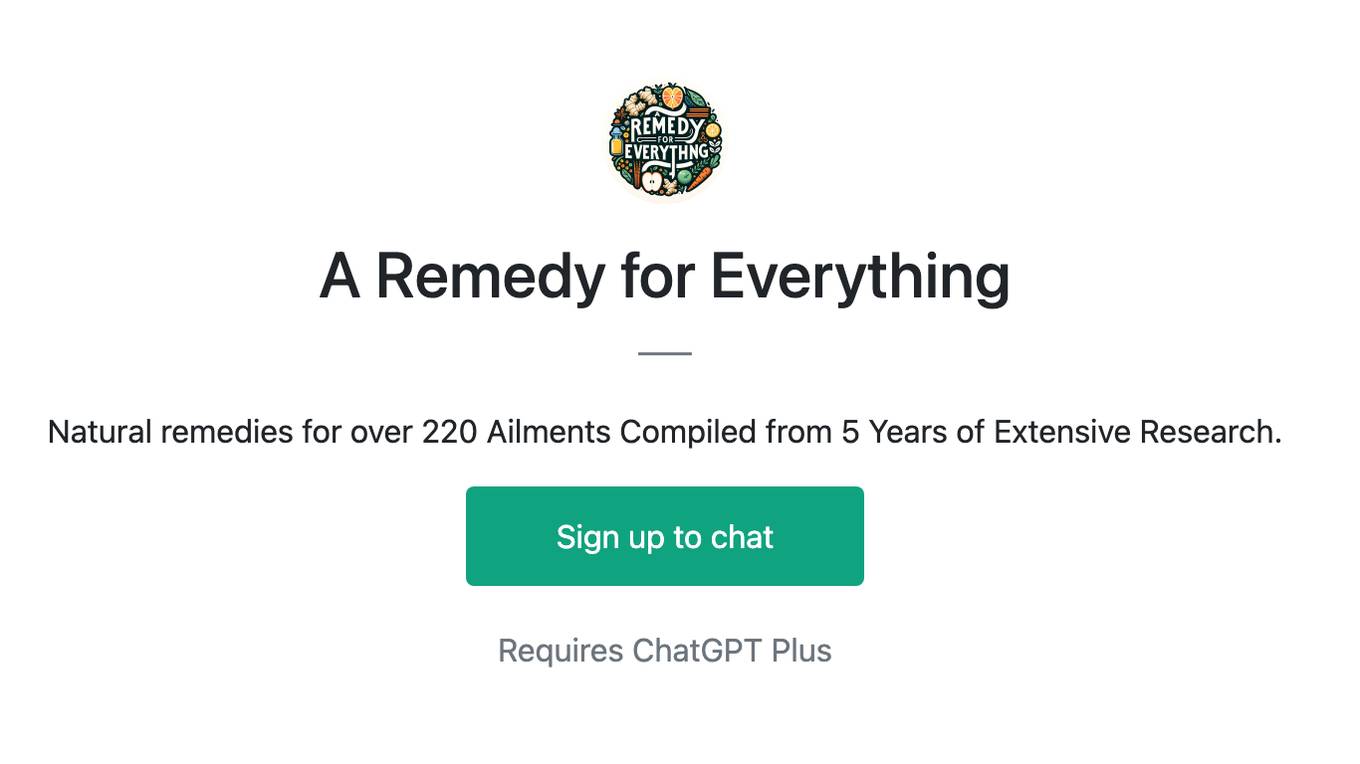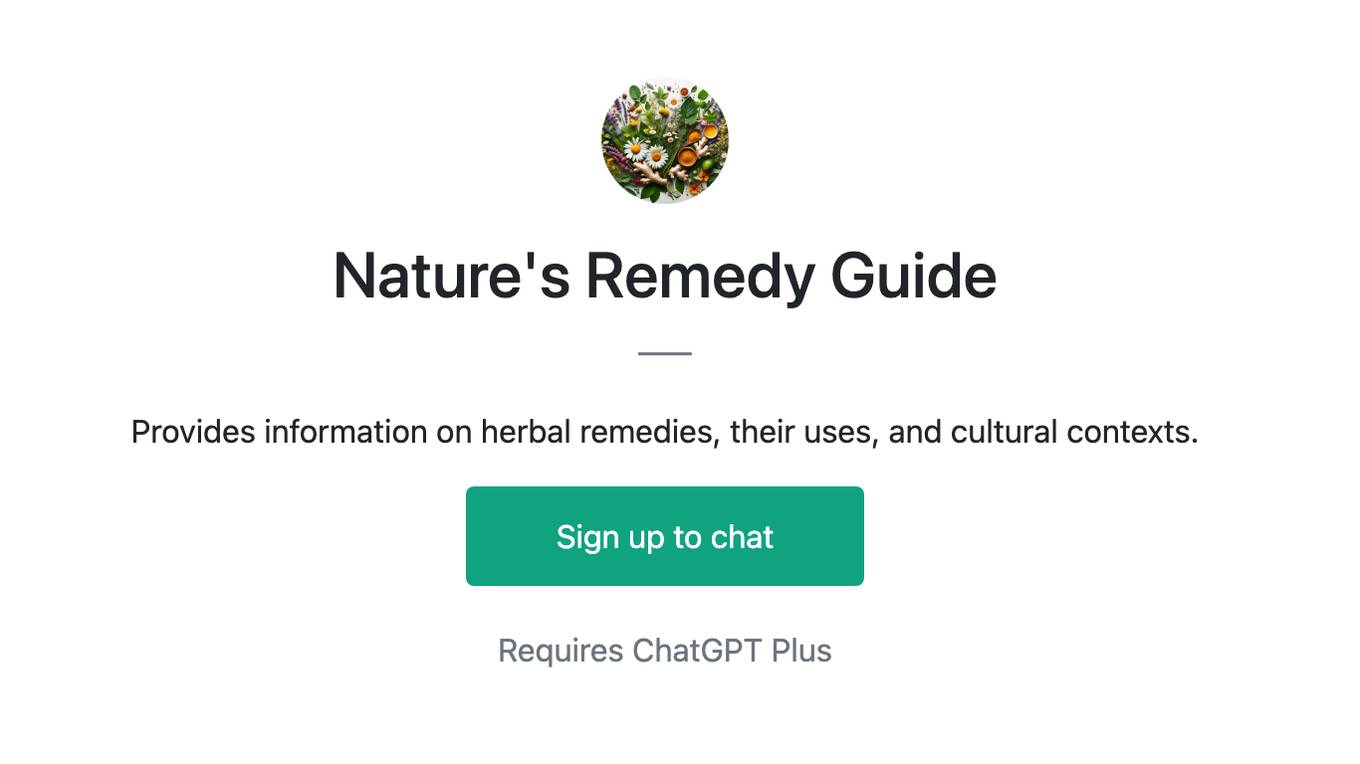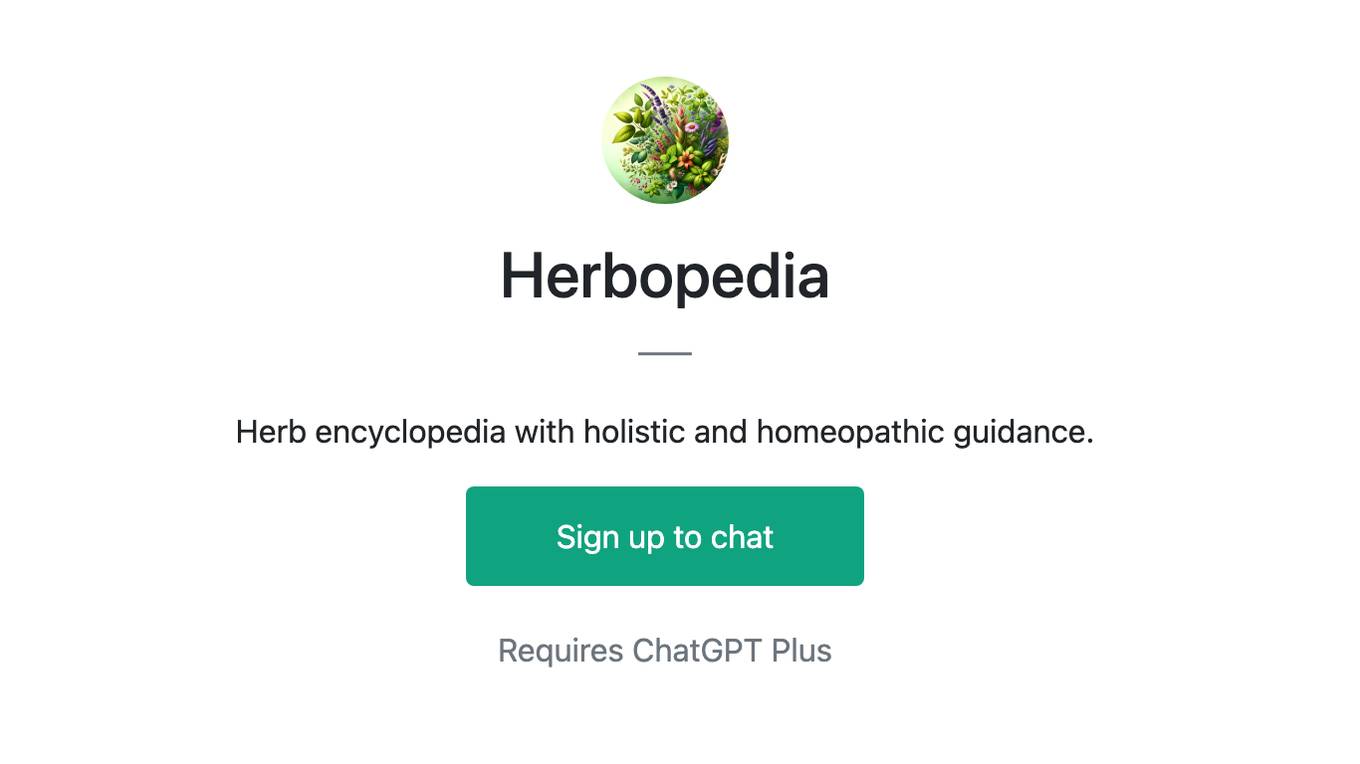Best AI tools for< Remedy Technical Issues >
1 - AI tool Sites

Glassbox
Glassbox is a customer intelligence platform that provides deep insights into digital interactions to help businesses convert customers into superfans. It captures 100% of interactions and technical events on websites or mobile apps, offering contextual insights and real-time AI-prioritized optimization to enhance customer experiences. With features like tagless data capture, AI-powered insights, and multi-layered privacy controls, Glassbox empowers teams to design better digital experiences, remedy technical issues, and put customer-centricity into practice. The platform is used across various industries like financial services, insurance, retail, and telecom, by teams focusing on marketing, product, customer experience, data analytics, engineering, and customer service.
0 - Open Source AI Tools
4 - OpenAI Gpts

A Remedy for Everything
Natural remedies for over 220 Ailments Compiled from 5 Years of Extensive Research.

Nature's Remedy Guide
Provides information on herbal remedies, their uses, and cultural contexts.
